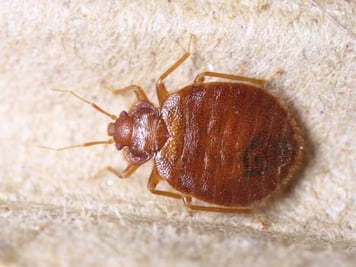Effective Bed Bug Exterminator: DC Providers with Heat Treatment
Effective Bed Bug Exterminator: DC Providers with Heat Treatment
Blog Article
Checking Out the Science Behind Bed Insect Warmth Treatments as a Lasting Bug Administration Technique
One such method that has actually gained traction in recent years is the usage of warm treatments to deal with bed insect infestations. The details of exactly how warmth properly removes bed insects and the wider effects for lasting parasite management techniques make this a subject worth discovering additionally.
Bed Insect Heat Therapy Process

Thermal Death Factor for Bed Insects
Revealing bed insects to elevated temperature levels past their thermal tolerance array is important for attaining reliable removal in warm treatment processes. The thermal death point for bed pests refers to the temperature level at which these bugs can not endure. Research study shows that bed bugs begin to perish when exposed to temperature levels above 113 ° F(45 ° C) for a continual duration. As the temperature level boosts, so does the mortality rate of bed bugs. At around 118 ° F(48 ° C ), bed bugs start to die rapidly, with a death price of nearly 99% within mins of direct exposure. This shows the sensitivity of bed pests to high temperatures and highlights the effectiveness of warm treatments in getting rid of invasions. By getting to and keeping temperature levels above the thermal death point for bed pests, insect administration specialists can ensure thorough elimination of bed bug populations, consisting of hard-to-reach locations where chemical treatments may be much less effective. Understanding the thermal death factor for bed insects is necessary for carrying out successful warmth therapy approaches and accomplishing lasting parasite management results.
Benefits of Warmth Treatments
Having established the critical thermal death point for bed pests, it is crucial to currently discover the significant benefits that heat therapies offer in properly eradicating these resistant parasites. When contrasted to traditional chemical techniques, warmth treatments existing several crucial advantages. Among the main advantages is use this link that warm can permeate deep into cracks and holes where bed insects hide, making certain that also the most hard-to-reach locations are warmed to deadly temperature levels. This comprehensive method not just eliminates live pests however also targets bed insect eggs, protecting against future invasions.
Furthermore, warmth therapies are safe and eco pleasant, making them a sustainable insect monitoring approach. Unlike chemical pesticides, heat therapies do not leave harmful deposits that can present dangers to human health or the setting. This element is particularly important in sensitive environments such as hospitals, schools, and suburbs where chemical use may not be preferable.
In addition, heat treatments have a high success price in removing bed pest infestations in a solitary treatment, reducing the demand for numerous check outs and reducing interruption to owners. This effectiveness not only saves time and cash yet also offers assurance to those managing bed pest issues.
Performance of Warmth Treatment

Heat treatments have the added advantage of killing bed pest eggs, which are commonly resistant to traditional chemical treatments. Overall, the performance of heat treatments in eliminating bed bug infestations makes them a reputable and lasting pest administration method.
Lasting Insect Administration Conveniences
Implementing lasting pest administration techniques offers lasting benefits for both the setting and public health and wellness. By making use of methods such as heat treatments for bug control, we can minimize the reliance on hazardous chemical pesticides that can have unfavorable results on environments and human wellness - exterminator. Lasting insect administration techniques aid in maintaining biodiversity by targeting specific parasites without harming non-target microorganisms, thereby keeping a balanced ecological community
Moreover, sustainable insect monitoring methods add to the general health and well-being of the public. By reducing exposure to poisonous chemicals made use of in conventional bug control approaches, warm therapies give a more secure choice for pest monitoring in property, industrial, and public areas. This reduction in chemical use likewise aids in stopping chemical deposits from infecting air, soil, and water, guarding ecological top quality.
Final Thought
In conclusion, bed bug warmth treatments have actually been revealed to be a reliable and sustainable insect monitoring technique. The thermal death factor for bed insects makes them susceptible to warmth treatments, which have countless benefits over traditional chemical therapies. The performance of warmth treatments in removing bed insect invasions while decreasing read environmental impact highlights the capacity of this technique as a lasting remedy for insect control.
The bed pest warmth therapy procedure entails increasing the temperature level within plagued areas to a level that properly gets rid of bed bugs and their eggs. By you can check here getting to and maintaining temperature levels above the thermal death point for bed insects, parasite monitoring professionals can guarantee extensive elimination of bed pest populaces, consisting of hard-to-reach locations where chemical treatments may be less reliable. One of the key advantages is that warmth can permeate deep right into cracks and holes where bed insects hide, making certain that also the most hard-to-reach locations are heated up to deadly temperature levels. Unlike chemical therapies that may leave behind resistant populations, heat therapies provide a eco friendly and non-toxic option that can pass through deep into furnishings, wall surfaces, and other hard-to-reach locations where bed pests hide.
The thermal fatality factor for bed insects makes them vulnerable to heat treatments, which have many benefits over conventional chemical therapies.
Report this page